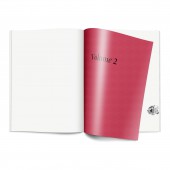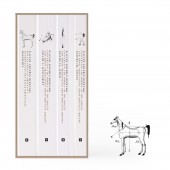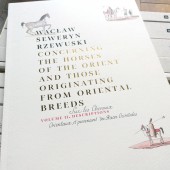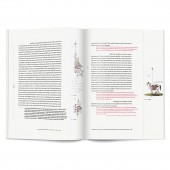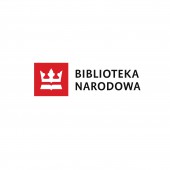Sur les Chevaux Orientaux et Provenant Scientific Publication of Manuscript by Aleksandra Toborowicz |
Home > Winners > #61472 |
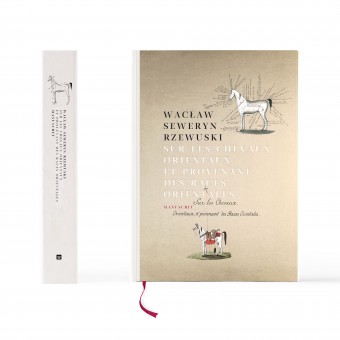 |
|
||||
| DESIGN DETAILS | |||||
| DESIGN NAME: Sur les Chevaux Orientaux et Provenant PRIMARY FUNCTION: Scientific Publication of Manuscript INSPIRATION: Beautifully handwritten and illustrated, 3 volumes old manuscript "Sur les Chevaux Orientaux et provenants des Races Orientales" by Count Waclaw Rzewuski's with authors' illustrations of Arabic culture: horses, historical maps of Arabia, bedouins and arabic habits, music notations, calligraphy etc. and handwritten marginalia. The project was made under the National Library in Warsaw, Poland and (for) the Qatar Museums in Qatar. UNIQUE PROPERTIES / PROJECT DESCRIPTION: An exclusive scientific edition comprises 9 volumes published together as 2 box sets in English and Polish: Manuscripts in French, English and Polish, Albums in English and Polish, Essays in English and Polish Descriptions in English and Polish. The binding features a combination of gold and natural cream color on the spine, a reference to the palette of the Arabian desert: sun and sand. Together with the high-quality white paper, these tones reflect the style of the traditional outer garments worn by Arab men, who particularly value exquisite, natural fabrics. OPERATION / FLOW / INTERACTION: - PROJECT DURATION AND LOCATION: The project started in July 2015 and finished in December 2017; Warsaw and Cracow, Poland |
PRODUCTION / REALIZATION TECHNOLOGY: The graphic design of the box set is intended to reflect the character of Waclaw Rzewuski's manuscript. The format is identical to that of the manuscript: 24 x 33 cm. The typographic layout reflects the style and layout of the manuscript, and even preserves the vertical burgundy lines separating the margins from the text. The noble burgundy shade used in the marginalia alludes to the color of the ink once used to make handwritten notes alongside the main text. The placement of the marginalia, directly beneath and close to the main text, conveys their connection to the text as a whole; they “jut into” the narrative, in a sense. The italics imitate the style of the handwriting. Additional references to the manuscript include the generously indented paragraphs and the use of em dashes, now rarely encountered in contemporary Polish books, where en dashes are usually preferred. SPECIFICATIONS / TECHNICAL PROPERTIES: The publication comprises 9 volumes: 7 hardbound books and 2 softcover booklets, published together as 2 box sets in English and Polish; it contains about 3500 pages. Format: 240 x 330 mm x ca. 50 mm – each of 9 books. 7 hardbound covers are made of an exclusive gold cover material with colorful original illustrations drawn by the author. The 2 softcover booklets are different, in a cream color on the cover and spine. The typography on a cover and spine – title and author's name are in black, gold and white hot and dry stamping and technology. Black illustrations with small horses on a spine made in silkscreen technique. TAGS: book, editorial, typography, scientific edition, layout, horse, arabic, culture, manuscript, history, collection, exclusive, Arab RESEARCH ABSTRACT: - CHALLENGE: The design (typographic) problem was to find a solution to reflect the nature of the manuscript in a layout of scientific book, including very complex various data: marginals, illustrations and references (links) of the manuscript. The layout had to be very readable and elegant and at the same time different from typical scientific publications. The greatest difficulty was the manual (not automatic script) typesetting of a very complicated layout (marginalia and linked main text) with a huge number of pages - ca. 3500. The difficult task was also the typesetting of Arabic texts, tables, indexes, glossaries, bibliographies and difficult mathematical and other calculations. Another problem to be solved was triple foliation (original, library and normal) and hierarchizing the validity of the text, mainly in typographic diagrams and describing maps and anatomy of horses. ADDED DATE: 2017-09-29 06:42:46 TEAM MEMBERS (4) : Art Director: dr Aleksandra Toborowicz, , Scientific supervisor: prof. Tadeusz Majda and Project managers: Sylwia Breczko, Liliana Skoczylas IMAGE CREDITS: Aleksandra Toborowicz, 2017. |
||||
| Visit the following page to learn more: http://bit.ly/2HeX2l7 | |||||
| AWARD DETAILS | |
 |
Sur Les Chevaux Orientaux Et Provenant Scientific Publication of Manuscript by Aleksandra Toborowicz is Winner in Print and Published Media Design Category, 2017 - 2018.· Read the interview with designer Aleksandra Toborowicz for design Sur les Chevaux Orientaux et Provenant here.· Press Members: Login or Register to request an exclusive interview with Aleksandra Toborowicz. · Click here to register inorder to view the profile and other works by Aleksandra Toborowicz. |
| SOCIAL |
| + Add to Likes / Favorites | Send to My Email | Comment | Testimonials | View Press-Release | Press Kit |
Did you like Aleksandra Toborowicz's Print Design?
You will most likely enjoy other award winning print design as well.
Click here to view more Award Winning Print Design.


